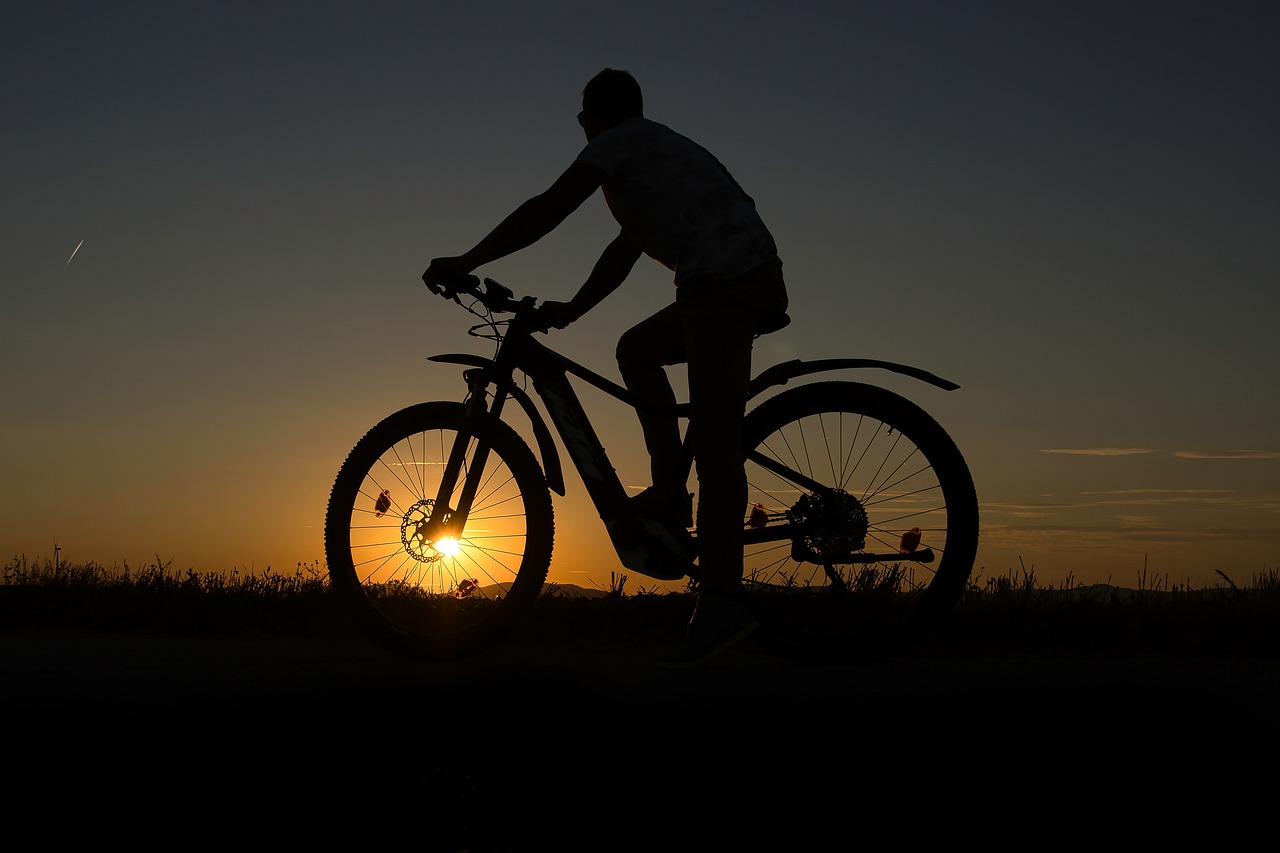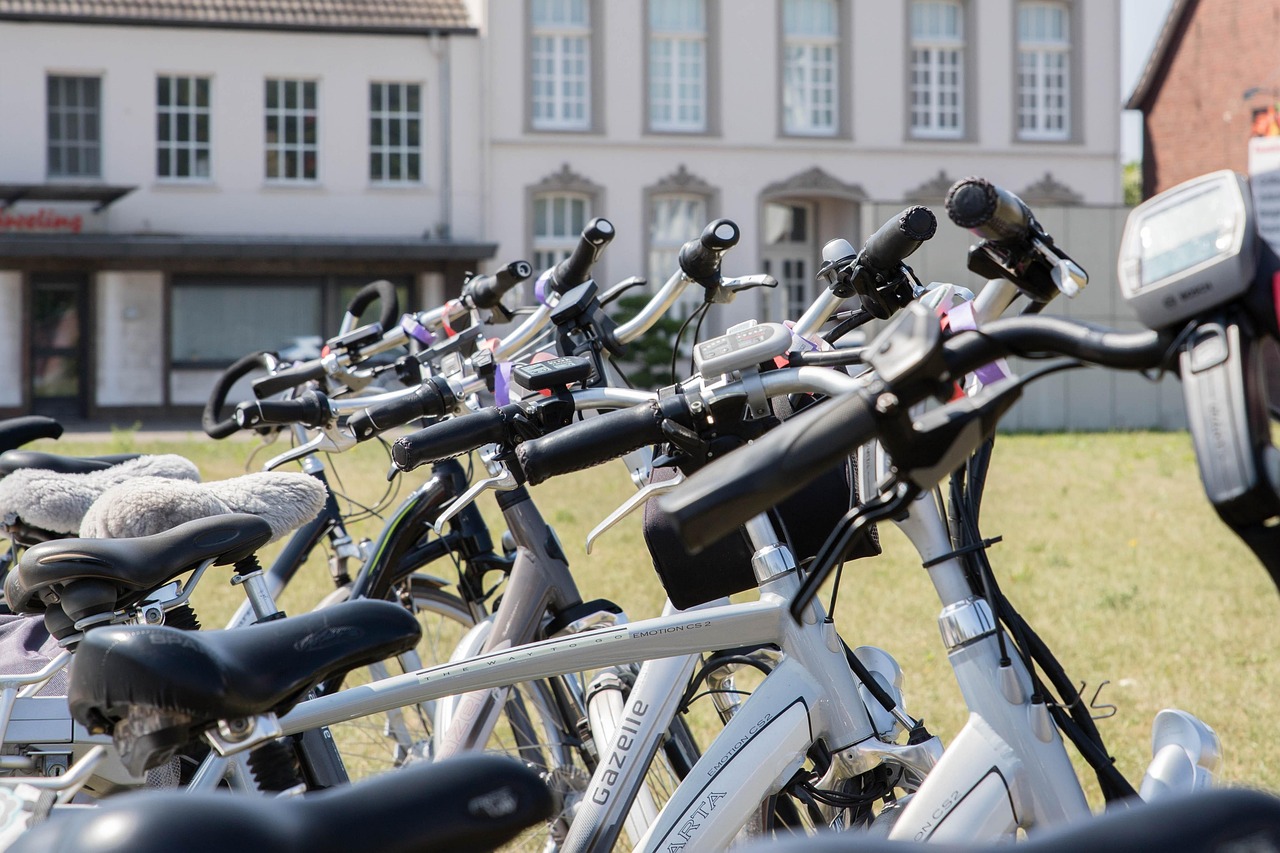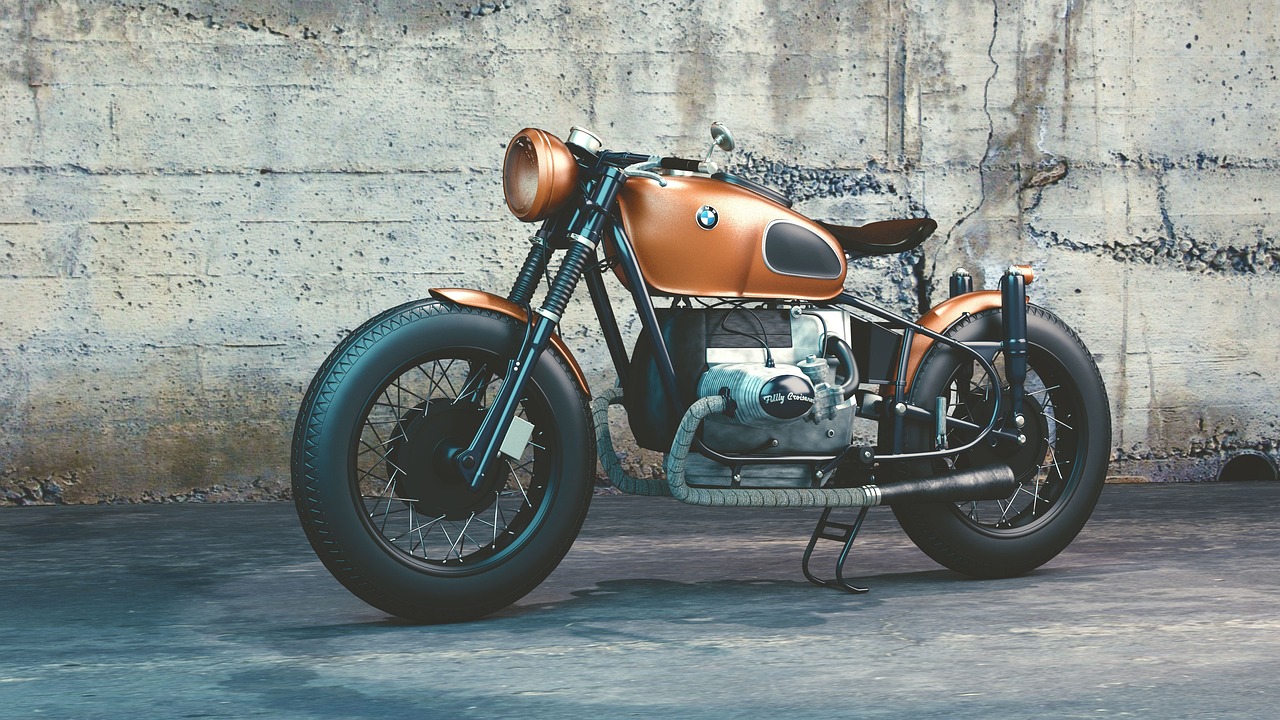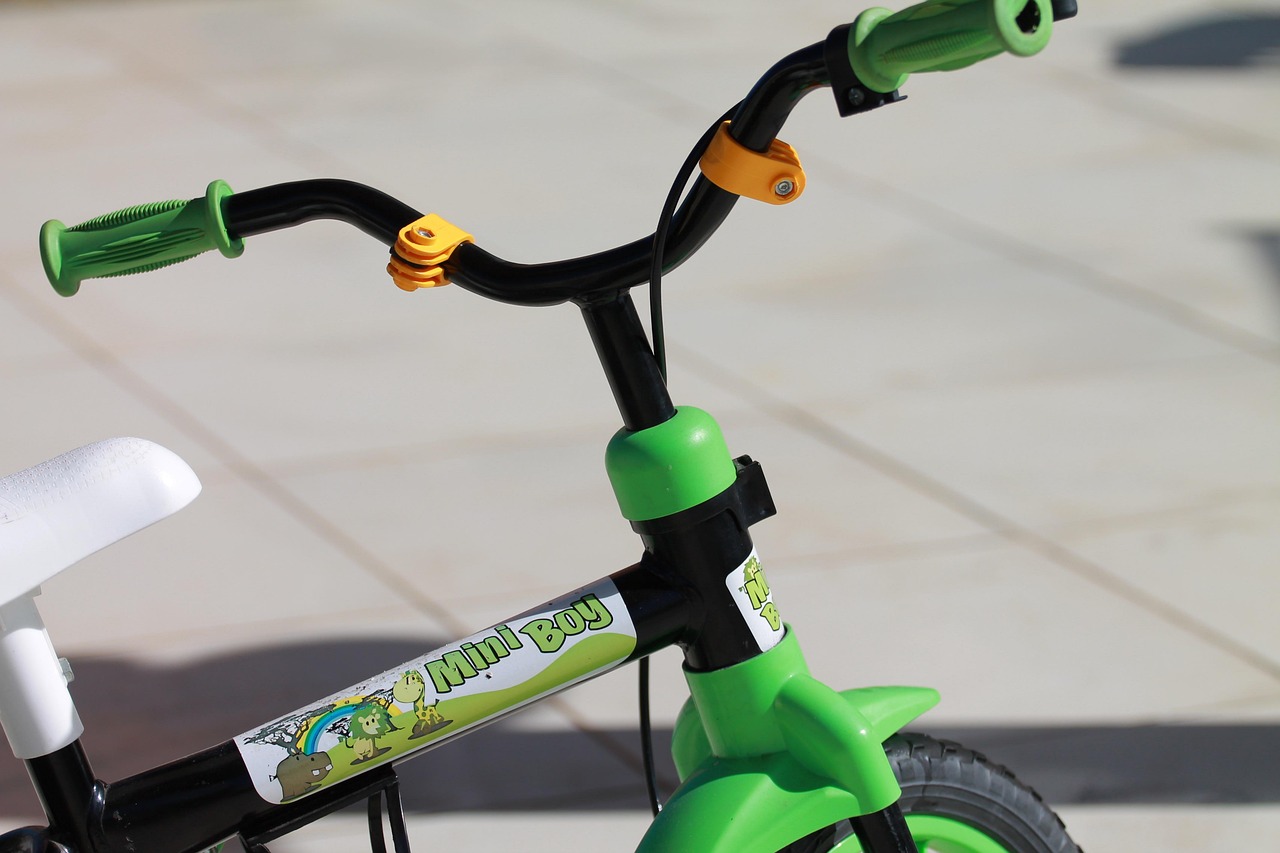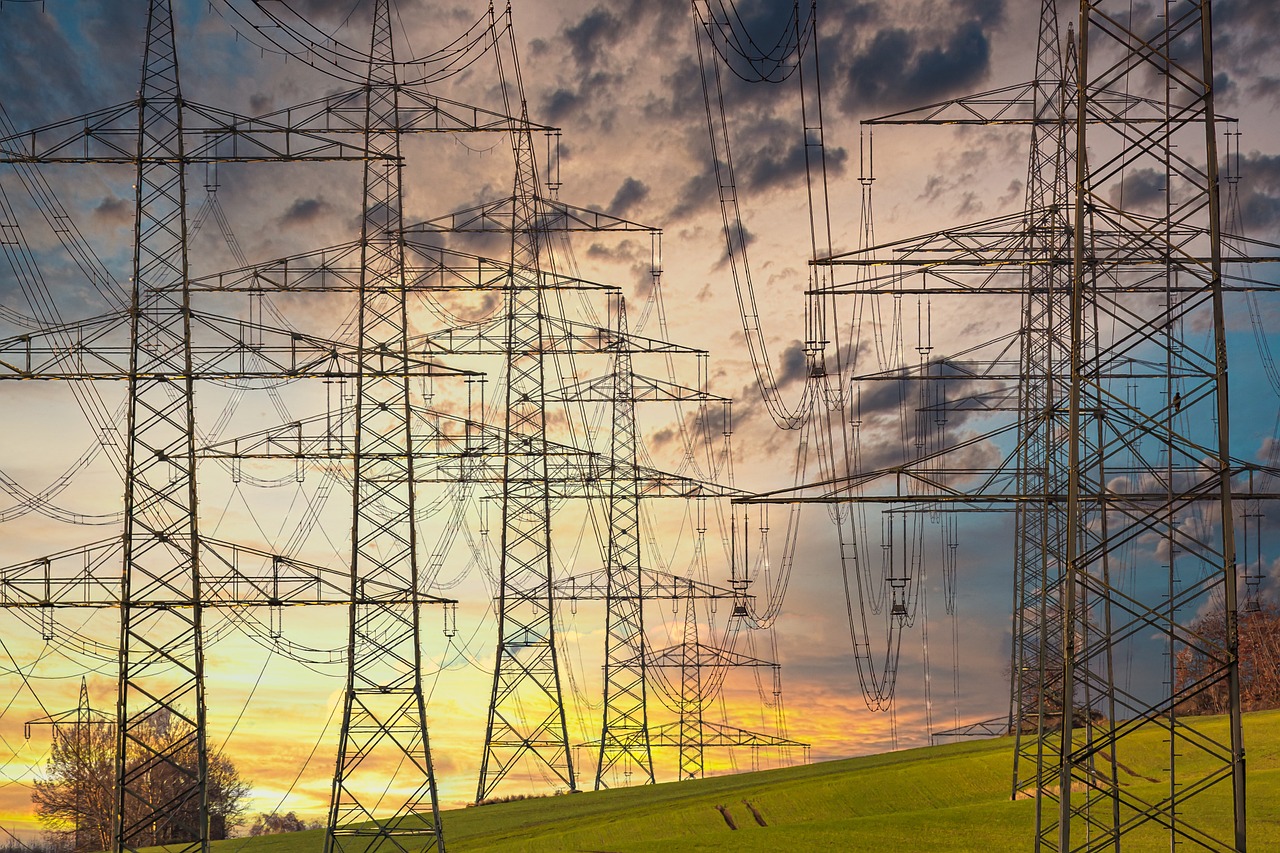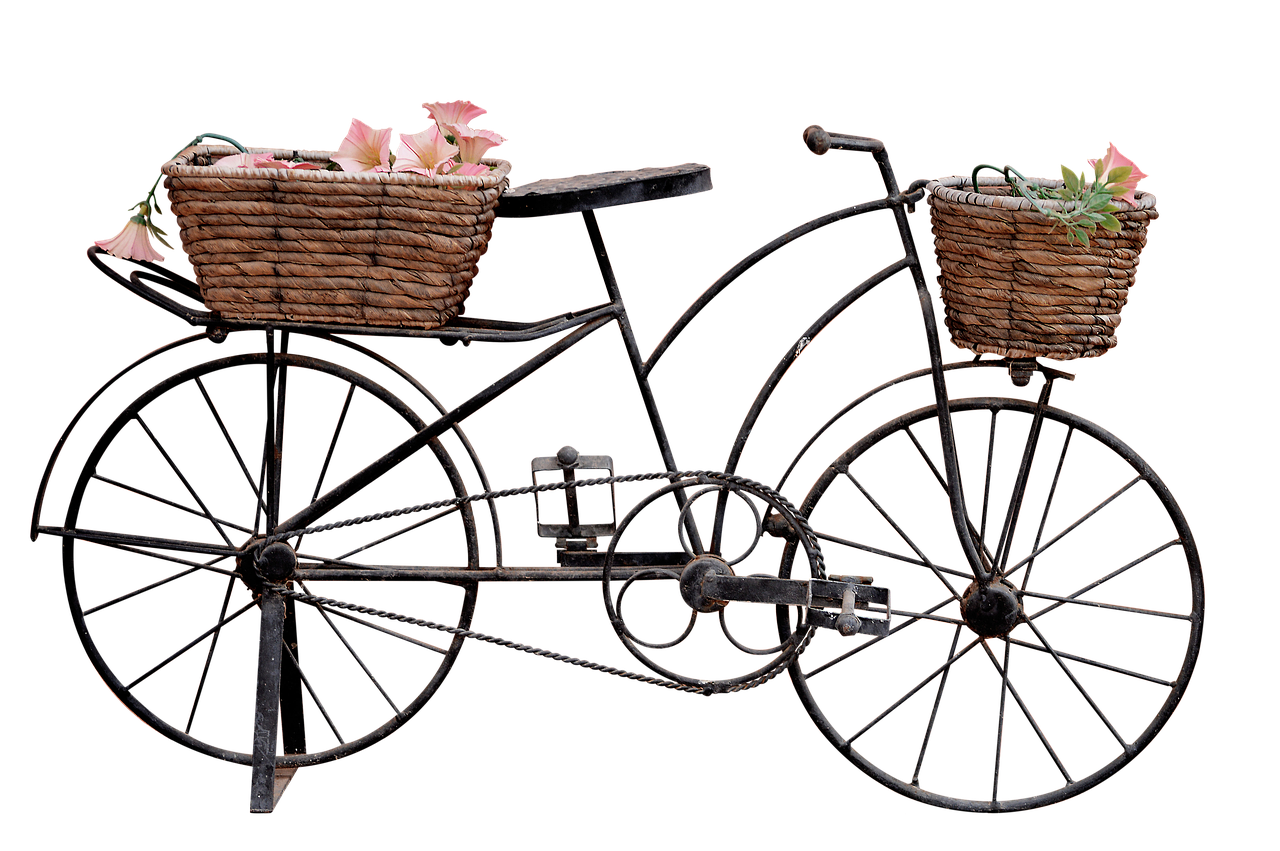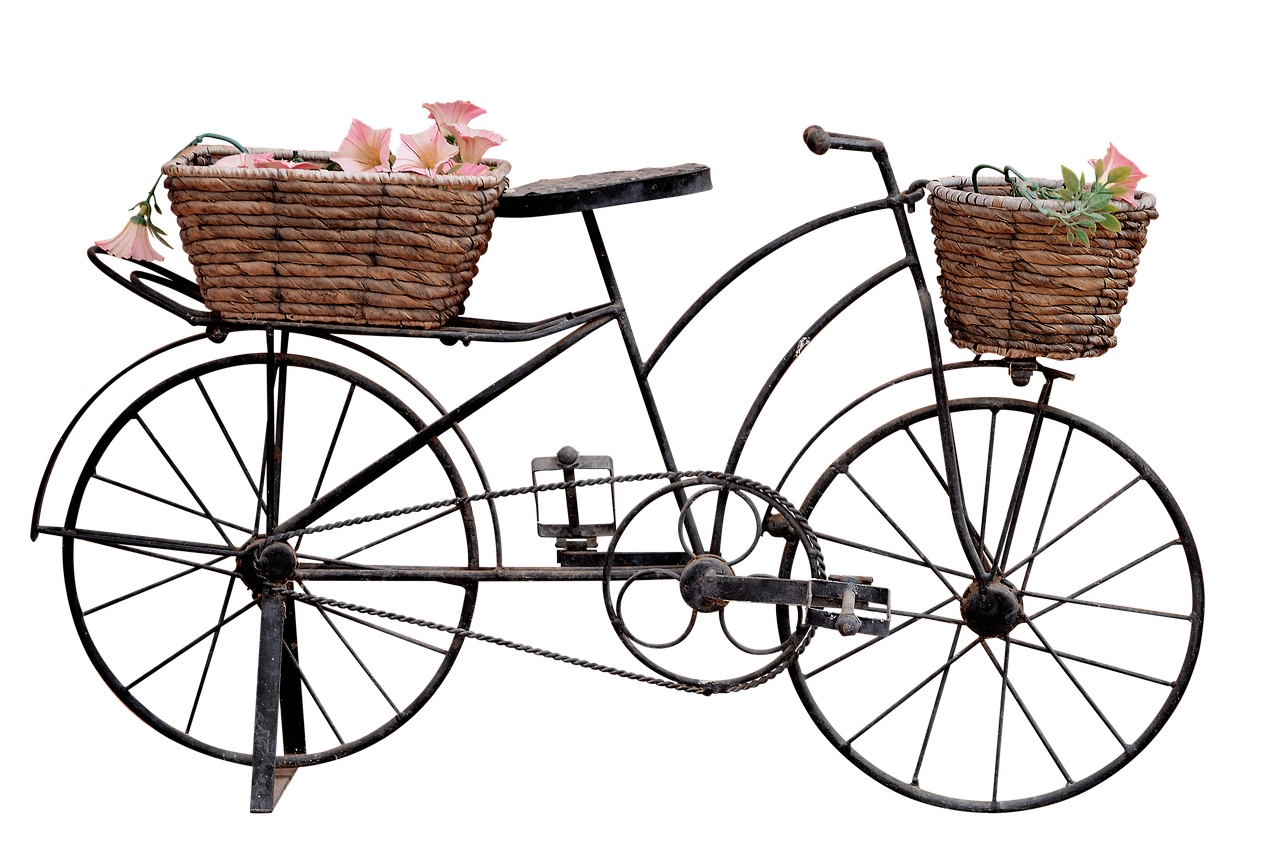This article delves into the best electric mountain bikes currently available, emphasizing their features, performance metrics, and user feedback. Our aim is to assist off-road enthusiasts in making well-informed decisions when selecting their next ride.
1. What to Look for in an Electric Mountain Bike
When choosing an electric mountain bike, it’s essential to consider key features such as motor power, battery life, and suspension systems. These elements significantly influence your riding experience and overall satisfaction.
2. Top Electric Mountain Bike Brands
- Trek: Known for its innovative designs and advanced technology.
- Specialized: Focuses on user-friendly features for riders of all levels.
- Giant: Offers a wide range of models catering to different riding styles.
3. Comparing Performance: Motor Types and Power
The type of motor plays a critical role in performance. Hub motors are generally easier to maintain, while mid-drive motors offer superior torque and handling on rugged terrains. Understanding these differences is crucial for selecting the right bike.
4. Battery Life and Range Considerations
Battery capacity, measured in watt-hours (Wh), is vital for off-road riding, directly affecting how far you can travel on a single charge. Riders should also consider charging times and options to minimize downtime.
5. Suspension Systems: Choosing the Right Setup
- Hardtail: Lighter and more efficient for climbing.
- Full Suspension: Provides better shock absorption and control on descents.
6. Weight Considerations for Electric Mountain Bikes
The weight of the bike influences handling and rider fatigue, especially on steep climbs. Finding a balance between weight and features is essential for optimal performance.
7. Price Ranges and Budgeting for Your E-MTB
Electric mountain bikes are available in various price ranges. Entry-level models are suitable for casual riders, while premium models offer advanced technology for serious enthusiasts.
8. User Reviews and Experiences
Reading user reviews provides valuable insights into real-world performance. Look for feedback on reputable biking forums to gauge different models’ reliability and satisfaction.
9. Maintenance Tips for Electric Mountain Bikes
Regular cleaning and inspection can prolong the life of your bike. Additionally, understanding battery care is essential for maximizing performance.
10. Accessories to Enhance Your E-MTB Experience
- Essential Safety Gear: Helmets and pads are crucial for protection.
- Upgrades and Customization: Tailor your bike to fit your specific needs.
11. The Future of Electric Mountain Bikes
The electric mountain bike industry is rapidly evolving, with emerging technologies promising exciting developments for off-road enthusiasts.
12. Conclusion: Choosing the Right Electric Mountain Bike for You
Selecting the right electric mountain bike involves considering various factors such as performance, budget, and personal preferences to ensure a satisfying riding experience.
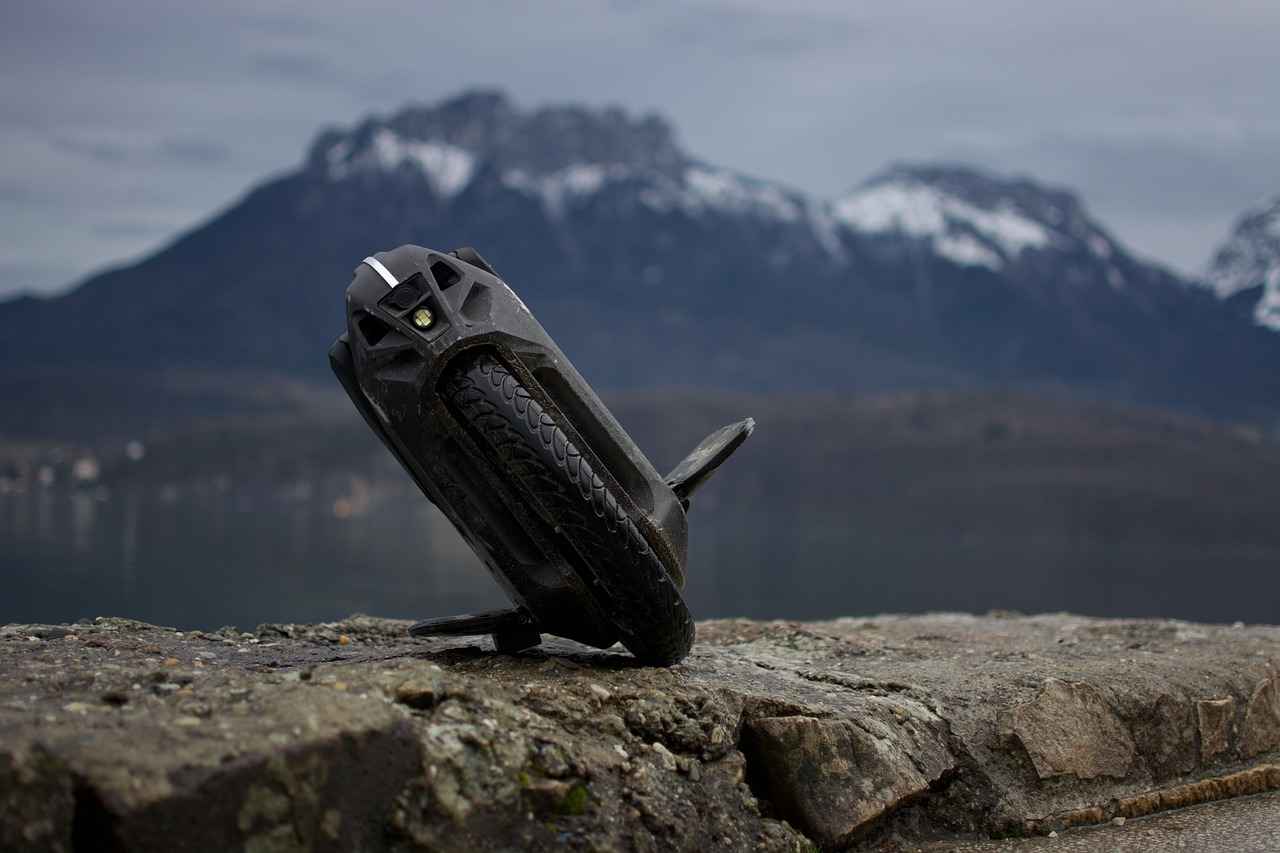
1. What to Look for in an Electric Mountain Bike
When it comes to selecting an electric mountain bike, understanding key features is essential for enhancing your riding experience and ensuring overall satisfaction. The three primary aspects to consider are motor power, battery life, and suspension. Each of these components plays a crucial role in how the bike performs on various terrains.
Motor Power is one of the most significant factors to consider. It directly influences how well the bike can handle steep climbs and challenging trails. Bikes equipped with a mid-drive motor typically offer better torque and weight distribution, making them ideal for rugged terrain. In contrast, hub motors are easier to maintain and provide a smoother ride, especially on flatter surfaces.
Battery Life is another critical element that affects your riding range. A bike with a higher battery capacity, measured in watt-hours (Wh), allows for longer rides without the need for frequent recharging. This is particularly important for off-road enthusiasts who may venture far from charging stations. Additionally, understanding the charging options and times can help you plan your rides better.
Suspension systems also greatly impact comfort and control. Electric mountain bikes come with either hardtail or full suspension setups. Hardtail bikes are generally lighter and more efficient for climbing, while full suspension bikes offer enhanced shock absorption, making them better suited for downhill and technical trails. Some models even feature adjustable suspension settings, allowing riders to customize their setup based on trail conditions.
In conclusion, when choosing an electric mountain bike, pay close attention to motor power, battery life, and suspension features. These elements can significantly enhance your riding experience, making your adventures on the trails more enjoyable and fulfilling.

2. Top Electric Mountain Bike Brands
Top Electric Mountain Bike Brands
In the rapidly evolving market of electric mountain bikes (e-MTBs), several brands have emerged as leaders, known for their commitment to quality and innovation. This section highlights some of the top brands, focusing on their unique offerings that cater to various riding styles and preferences.
- Trek
Trek is a pioneer in the e-MTB segment, renowned for its cutting-edge technology and robust designs. Their bikes are engineered to provide exceptional performance, making them a favorite among serious riders.
- Powerfly Series: This series features powerful motors and long-lasting batteries, perfect for tackling steep inclines and challenging trails.
- Rail Series: With aggressive geometry and high-travel suspension, the Rail series is designed for downhill performance without sacrificing climbing efficiency.
- Specialized
Specialized focuses on integrating advanced technology with user-friendly features. Their e-MTBs are designed to enhance the riding experience for both novices and experienced riders.
- Turbo Levo: Known for its lightweight frame and powerful motor, the Turbo Levo offers a smooth ride on rugged terrains.
- Turbo Kenevo: This model is ideal for downhill enthusiasts, providing excellent suspension and stability on steep descents.
- Giant
Giant is another prominent player in the e-MTB market, offering a range of models that balance performance and affordability. Their bikes are built for durability and versatility.
- Trance E+: This bike combines a powerful motor with a well-balanced frame, making it suitable for various terrains.
- Fathom E+: A great choice for those looking for a hardtail option, the Fathom E+ is lightweight and efficient for climbing.
Each of these brands brings something unique to the table, ensuring that riders can find an electric mountain bike that perfectly matches their needs and riding style. Whether you prioritize power, comfort, or technology, there’s an option available to enhance your off-road adventures.
2.1. Trek’s Innovations in E-Mountain Bikes
Trek has firmly established itself as a pioneering force in the electric mountain bike (e-MTB) segment, consistently pushing the boundaries of technology and design. With an unwavering commitment to performance and reliability, Trek’s offerings are tailored for serious riders who demand the best from their bikes. This article delves into the innovative features that set Trek apart in the competitive landscape of e-MTBs.
One of the most notable advancements in Trek’s e-MTB lineup is the integration of powerful motors. The company utilizes high-performance mid-drive motors that provide enhanced torque and efficiency, allowing riders to conquer steep inclines and challenging terrains effortlessly. This technology not only boosts climbing capabilities but also ensures a smoother ride across various trail conditions.
In addition to motor performance, Trek places a significant emphasis on battery life. The latest models are equipped with high-capacity batteries that offer extended ranges, enabling riders to tackle longer trails without the worry of running out of power. The Powerfly series, for instance, features batteries that can last up to 100 miles on a single charge, making it ideal for adventurous outings.
Another aspect where Trek excels is in the design of their suspension systems. The Rail series is engineered with advanced adjustable suspension, providing riders with the ability to customize their setup based on trail conditions. This adaptability enhances both comfort and control, allowing riders to navigate technical descents and rugged landscapes with confidence.
Moreover, Trek’s commitment to durability is evident in their robust frame designs. Constructed from high-quality materials, these bikes are built to withstand the rigors of off-road riding while maintaining a lightweight profile. This balance of strength and weight is crucial for performance-driven riders.
In conclusion, Trek’s innovations in electric mountain bikes are a testament to their dedication to enhancing the riding experience. From powerful motors and long-lasting batteries to advanced suspension systems and durable designs, Trek continues to lead the way in the e-MTB market, making it a top choice for off-road enthusiasts seeking performance and reliability.
2.1.1. Trek Powerfly Series
The Trek Powerfly Series stands out in the electric mountain bike market due to its remarkable blend of powerful motors and long-lasting batteries. Designed for off-road enthusiasts, these bikes are engineered to conquer challenging trails and steep inclines with ease, making them a top choice for riders seeking adventure.
One of the key features of the Powerfly series is its high-performance motor. With options ranging from 250W to 750W, these motors provide exceptional torque and acceleration, allowing riders to tackle even the most rugged terrains without breaking a sweat. Whether you’re climbing a steep hill or navigating rocky paths, the Powerfly’s motor ensures a smooth and powerful ride.
In addition to its impressive motor, the Powerfly Series is equipped with durable batteries that offer extended riding range. With battery capacities of up to 625Wh, riders can enjoy long rides without worrying about running out of power. This feature is particularly beneficial for those who love to explore remote trails, as it provides the confidence to venture further.
The suspension system in the Powerfly series is another highlight, designed to absorb shocks and bumps effectively. This ensures a comfortable ride, even on the roughest surfaces. Riders can choose between hardtail and full-suspension models, depending on their preferences and riding styles.
Moreover, the Trek Powerfly series is designed with user-friendly technology, including integrated lights, a digital display, and connectivity options for tracking performance. This combination of features not only enhances the riding experience but also ensures safety during night rides or in low-visibility conditions.
In conclusion, the Trek Powerfly Series is an excellent choice for electric mountain biking enthusiasts. With its powerful motors, long-lasting batteries, and advanced features, it offers everything a rider needs to tackle challenging terrains confidently. Whether you’re a seasoned rider or just starting, the Powerfly series is sure to elevate your off-road adventures.
2.1.2. Trek Rail Series
The Trek Rail Series represents the pinnacle of electric mountain bike engineering, combining aggressive design with cutting-edge technology. This series is meticulously crafted for downhill performance while ensuring that riders do not sacrifice their ability to climb efficiently. Its unique geometry and advanced suspension system make it a standout choice for serious mountain bikers.
The aggressive geometry of the Rail series is designed to enhance stability and control during high-speed descents. Riders can expect a more confident handling experience, allowing them to tackle steep trails and technical terrain with ease. The bike’s frame is engineered to optimize weight distribution, which is crucial for maintaining balance and agility on challenging rides.
One of the most impressive features of the Rail series is its higher travel suspension. This system absorbs shocks effectively, providing a smoother ride over rocky paths and uneven surfaces. Riders will appreciate how this suspension setup not only cushions impacts but also enhances traction, allowing for better grip when navigating tricky sections of a trail.
Moreover, the Rail series is equipped with powerful motors that deliver impressive torque, enabling riders to conquer steep climbs without feeling fatigued. The seamless integration of the motor with the bike’s design ensures that the rider experiences a natural feeling of propulsion, making it easier to maintain speed on ascents.
In conclusion, the Trek Rail Series is an exceptional choice for those who seek an electric mountain bike that excels in downhill performance while maintaining climbing efficiency. With its aggressive geometry and advanced suspension, it is tailored for riders who demand the best from their equipment.
2.2. Specialized’s Approach to E-Bikes
Specialized has established itself as a leader in the electric mountain bike (e-MTB) market by combining innovative technology with a focus on user-friendly design. This approach ensures that riders of all skill levels can experience the thrill of electric mountain biking without feeling overwhelmed by complex features.
One of the standout aspects of Specialized’s e-MTBs is their commitment to performance and comfort. The integration of advanced components, such as high-efficiency motors and long-lasting batteries, allows cyclists to tackle challenging terrains with ease. Riders can enjoy extended journeys without the anxiety of running out of power, thanks to Specialized’s emphasis on battery efficiency.
Moreover, Specialized designs their bikes with ergonomics in mind. The geometry of their frames is tailored to provide a comfortable riding position, which is crucial for both casual riders and seasoned enthusiasts. This thoughtful design reduces fatigue during long rides, making it easier for riders to navigate steep climbs and rugged trails.
In addition to comfort, Specialized incorporates intelligent technology into their e-MTBs. Features like integrated displays provide real-time data on speed, battery life, and distance traveled, allowing riders to make informed decisions on the trail. This tech-savvy approach enhances the overall riding experience, making it more interactive and enjoyable.
Furthermore, Specialized is dedicated to customization. Their e-MTBs often come with adjustable settings for suspension and power assistance, enabling riders to tailor their bike’s performance to their specific needs and preferences. This flexibility is particularly beneficial for those who ride in varying conditions, from smooth trails to technical descents.
In conclusion, Specialized’s approach to electric mountain bikes is all about empowering riders. By merging cutting-edge technology with user-friendly features, they ensure that everyone, regardless of skill level, can enjoy the exhilarating world of e-MTB riding.
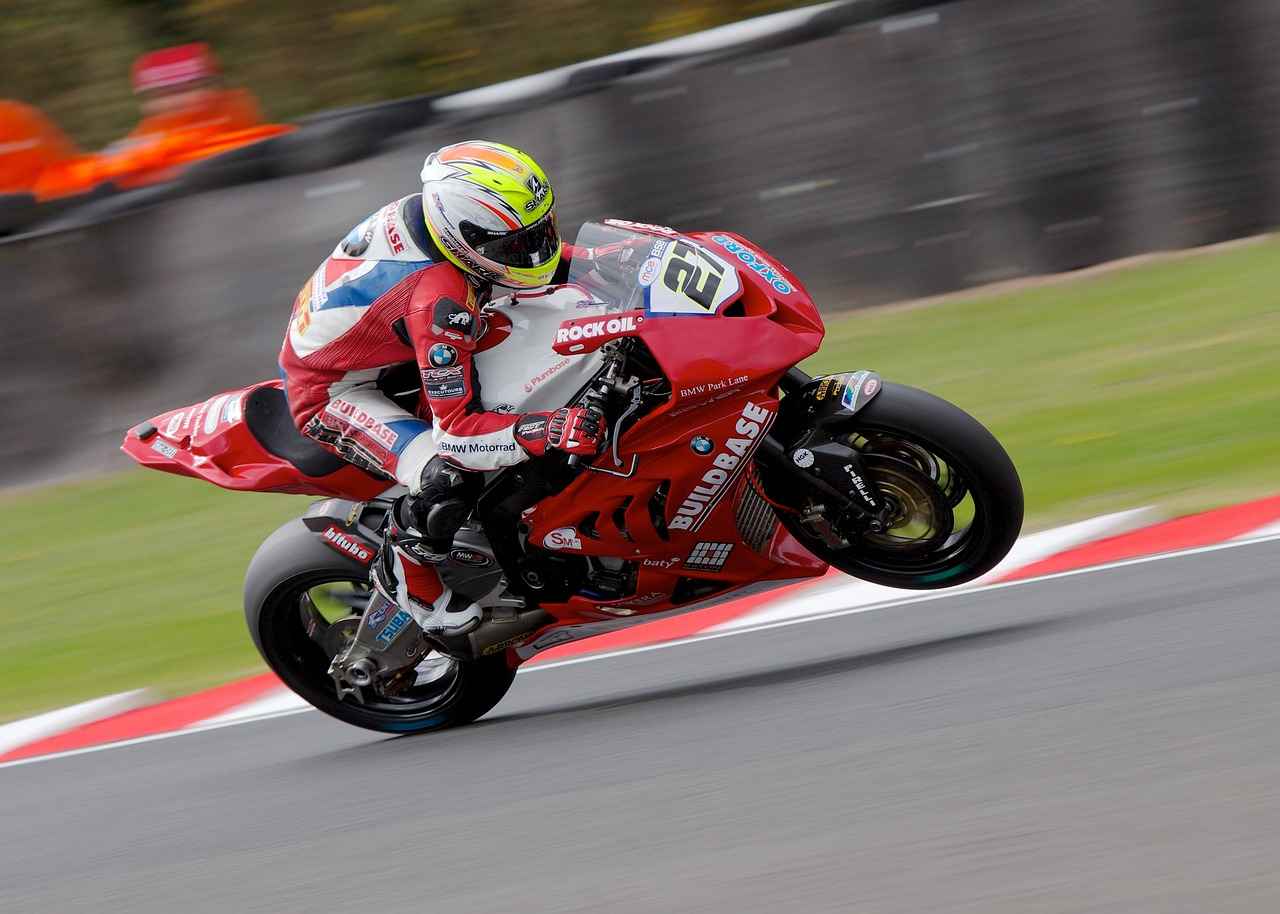
3. Comparing Performance: Motor Types and Power
When it comes to electric mountain bikes, the type of motor plays a pivotal role in determining the overall performance, handling, and riding experience. There are two primary types of motors found in these bikes: hub motors and mid-drive motors. Understanding their differences is essential for making an informed choice that aligns with your riding style and preferences.
| Motor Type | Performance Characteristics | Weight Distribution | Riding Experience |
|---|---|---|---|
| Hub Motors | Provide a smooth ride, ideal for flat terrains | Weight is concentrated in the wheel, affecting balance | Less torque, suitable for casual riding |
| Mid-Drive Motors | Better torque and acceleration, excels on steep climbs | Weight is centralized, improving handling | More responsive, great for technical trails |
Hub motors are typically easier to maintain and provide a quiet, smooth ride. They are often found in entry-level models, making them accessible for casual riders. However, their performance can diminish on steep inclines, where power is crucial.
On the other hand, mid-drive motors are integrated into the bike’s frame, allowing for better weight distribution and improved handling. They deliver superior torque, making them ideal for challenging terrains and steep climbs. This type of motor also allows for a more natural cycling experience, as it utilizes the bike’s gears to optimize power output.
In conclusion, the choice between hub and mid-drive motors significantly impacts your riding experience. If you prioritize ease of use and maintenance, a hub motor might be suitable. However, for those seeking performance and versatility on varied terrains, a mid-drive motor is likely the better option. Understanding these distinctions will help you select an electric mountain bike that best fits your riding style and needs.
3.1. Hub Motors vs. Mid-Drive Motors
When it comes to electric mountain bikes, the choice of motor type can significantly influence your riding experience. Two popular motor configurations are hub motors and mid-drive motors, each with its unique advantages and disadvantages.
| Feature | Hub Motors | Mid-Drive Motors |
|---|---|---|
| Maintenance | Generally easier to maintain due to fewer moving parts. | May require more frequent maintenance because of the complexity. |
| Ride Smoothness | Offers a smoother ride as they provide consistent power. | Can be less smooth on flat terrain but excels in torque delivery. |
| Torque | Less torque, making them less effective on steep climbs. | Superior torque, allowing for better handling on rugged terrain. |
| Weight Distribution | Heavier at the wheel, which can affect handling. | Better weight distribution, enhancing overall bike control. |
Hub motors are typically located in the wheel hub and are known for their simplicity and ease of use. They provide a smooth ride, making them ideal for casual riders who prioritize comfort over intense performance. However, their torque output is generally lower, which can be a disadvantage when tackling steep hills or rough terrain.
On the other hand, mid-drive motors are situated at the bike’s crank and offer superior torque and efficiency. This makes them particularly effective for off-road riding, where handling and power are crucial. Riders who prefer challenging trails and steep inclines will benefit from the enhanced torque and better weight distribution that mid-drive motors provide. However, they may require more maintenance due to their complex design.
In summary, the choice between hub motors and mid-drive motors ultimately depends on your riding style and preferences. If you seek a smooth, low-maintenance ride, hub motors might be the way to go. Conversely, if you are an off-road enthusiast looking for better performance and handling, mid-drive motors are likely your best option.
3.2. Power Ratings Explained
Understanding the power ratings of electric mountain bikes is crucial for any rider looking to maximize their performance on challenging trails. Motor power ratings, typically measured in watts, play a significant role in determining how effectively a bike can assist during climbs and navigate rugged terrains. Higher wattage often correlates with enhanced performance, especially in demanding conditions.
When evaluating electric mountain bikes, it’s essential to consider not only the wattage but also how it translates into real-world riding experiences. For instance, a bike with a motor rated at 750 watts may provide superior torque and acceleration compared to one with a 250-watt motor, particularly when tackling steep inclines or loose gravel. This capability allows riders to maintain momentum and conserve energy, making it easier to conquer challenging trails.
Moreover, the type of motor can influence the bike’s overall performance. Mid-drive motors, which are often found in higher-end models, tend to deliver better power distribution and handling. They allow for a more natural riding experience, especially on steep climbs, as the motor assists in propelling the bike forward without compromising balance. In contrast, hub motors can be simpler and more cost-effective but may lack the same level of performance in demanding conditions.
In addition to wattage, riders should also consider the bike’s overall weight and battery efficiency. A powerful motor is advantageous, but it must be paired with a robust battery to ensure that the bike can sustain its performance over longer rides. Ultimately, finding the right balance between motor power and battery capacity is key to enhancing your off-road adventures.
In conclusion, understanding power ratings and their implications on performance can significantly enhance your riding experience. Whether you are a casual rider or a serious enthusiast, choosing a bike with the right motor power will ensure that you can tackle any trail with confidence.

4. Battery Life and Range Considerations
Battery life and efficiency are critical factors for any off-road biking adventure, especially when it comes to electric mountain bikes. These elements significantly influence not only the distance you can cover on a single charge but also the bike’s overall performance when navigating challenging terrains.
When considering an electric mountain bike, it is essential to evaluate the battery capacity, typically measured in watt-hours (Wh). A higher capacity allows for longer rides without the need for frequent recharging, which is particularly beneficial for off-road enthusiasts who may traverse remote trails. For instance, bikes equipped with batteries ranging from 500Wh to 750Wh can offer extended range, enabling riders to tackle steep climbs and rugged paths with confidence.
Another aspect to consider is the efficiency of the battery. This refers to how well the bike utilizes its stored energy during rides. Factors such as motor type, terrain, and rider weight can all affect battery efficiency. A bike with a mid-drive motor often provides better efficiency on inclines compared to hub motors, making it a preferred choice for serious off-road riders.
Additionally, understanding charging times is crucial. Most electric mountain bike batteries take between 4 to 6 hours to fully charge. However, some models offer fast charging options that can significantly reduce downtime, allowing riders to get back on the trails sooner. It’s advisable to invest in a bike that provides multiple charging options, including standard wall outlets and portable chargers for convenience.
In conclusion, when selecting an electric mountain bike, prioritizing battery capacity and efficiency can greatly enhance your riding experience. A well-chosen battery not only extends your range but also ensures that your bike performs optimally, even under challenging conditions. Remember to consider how these factors align with your riding style and the types of trails you plan to explore.
4.1. Understanding Battery Capacity
Understanding Battery Capacity is crucial for anyone considering an electric mountain bike (e-MTB). The battery capacity, measured in watt-hours (Wh), plays a significant role in determining the distance you can travel on a single charge. For off-road enthusiasts, this aspect becomes even more pivotal as it directly affects your riding experience.
A higher capacity battery allows for longer rides, which is essential when tackling challenging terrains and extended trails. When selecting an e-MTB, it is important to look for models that offer a battery capacity suitable for your intended use. For instance, if you plan to embark on lengthy adventures through rugged landscapes, opting for a bike with a larger battery capacity is advisable.
In addition to capacity, the efficiency of the battery also matters. A bike with a high-capacity battery but poor efficiency may not provide the expected range. Therefore, understanding both the watt-hours and the overall power management system of the bike is essential. Some manufacturers provide detailed specifications about how their batteries perform under various conditions, which can be incredibly helpful when making a decision.
Moreover, consider the charging time and options available for your chosen e-MTB. A bike that takes too long to recharge can limit your riding opportunities, especially if you frequently ride in remote areas. Many modern e-MTBs come with fast-charging capabilities, allowing you to get back on the trail quicker.
In summary, understanding battery capacity is not just about numbers; it encompasses a range of factors that influence your overall riding experience. By selecting a bike with an appropriate battery capacity and considering its efficiency and charging options, you can ensure that your rides are enjoyable and uninterrupted.
4.2. Charging Times and Options
Charging times and options are critical factors to consider when investing in an electric mountain bike (e-MTB). Understanding these aspects not only improves your riding experience but also ensures that you can maximize your time on the trails without unnecessary delays.
Most electric mountain bikes come equipped with lithium-ion batteries, which are known for their efficiency and longevity. However, the charging time can vary significantly based on the battery’s capacity and the charger used. On average, a standard e-MTB battery takes about 4 to 6 hours to fully charge using a standard charger. For those in a hurry, fast chargers can reduce this time to approximately 2 to 3 hours, making them a great option for riders who want to minimize downtime.
When choosing a charging option, consider the following:
- Home Charging: Most riders will charge their bikes at home using a standard outlet. It’s essential to have a dedicated space for charging, ideally in a cool, dry area to prolong battery life.
- Portable Chargers: For long rides, investing in a portable charger can be beneficial. These chargers allow you to recharge your battery on the go, especially useful on multi-day trips.
- Charging Stations: Some trails and parks are equipped with charging stations. Check local resources or apps that map out charging locations to ensure you’re never caught with a depleted battery.
Additionally, understanding how to maintain your battery can enhance its performance and lifespan. Regularly check the battery’s health and avoid letting it drop below 20% charge frequently. This practice not only helps in maintaining battery health but also ensures you have enough power for your next adventure.
In conclusion, knowing the charging times and options available for your electric mountain bike can significantly enhance your riding experience. By planning ahead and utilizing various charging methods, you can ensure that your bike is ready for every ride, minimizing downtime and maximizing enjoyment on the trails.
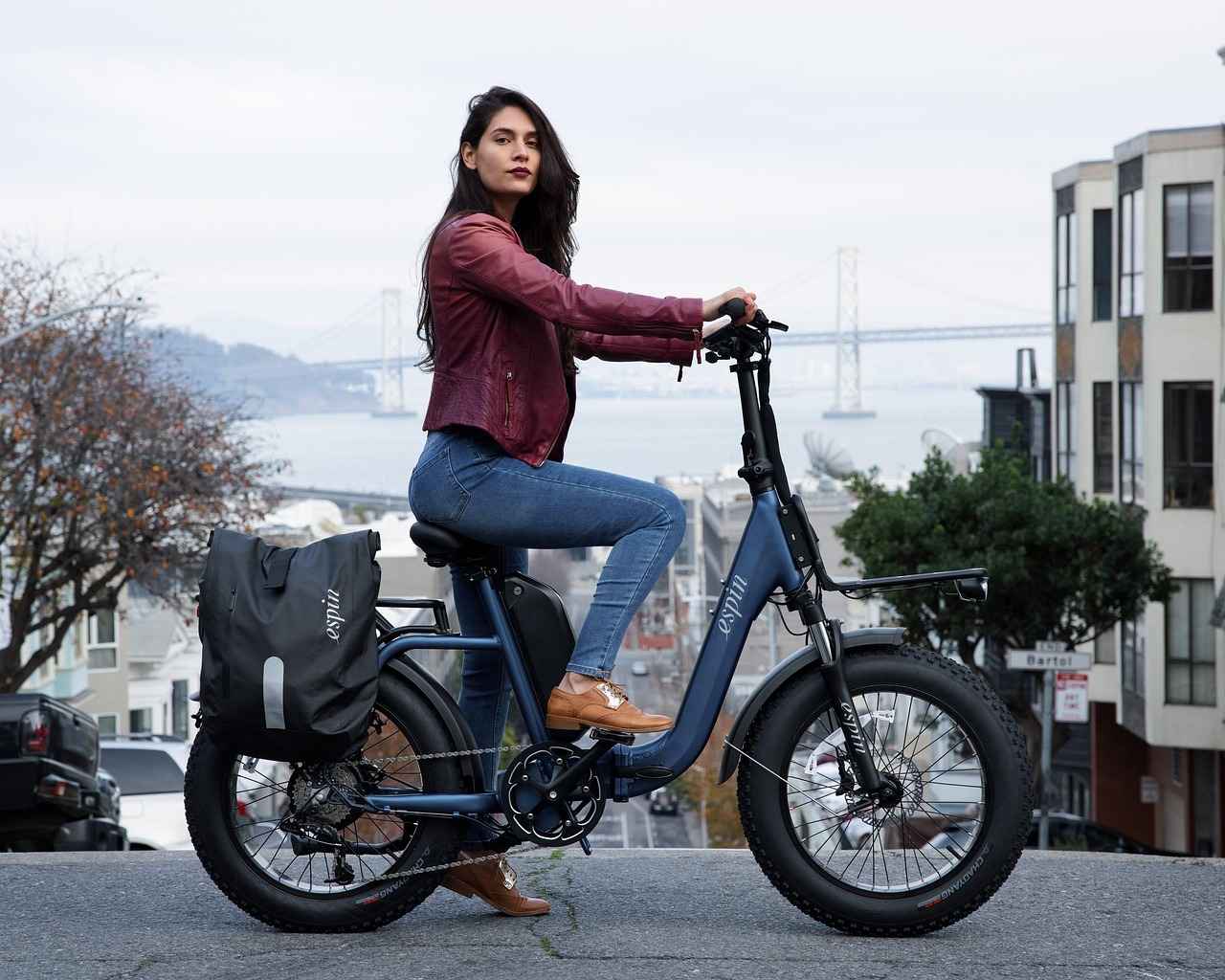
5. Suspension Systems: Choosing the Right Setup
Suspension systems play a crucial role in the overall performance of electric mountain bikes, particularly when navigating through rough terrains. The right suspension setup can significantly enhance both comfort and control, allowing riders to tackle challenging trails with confidence.
When selecting an electric mountain bike, it is essential to understand the different types of suspension systems available. The two primary categories are hardtail and full suspension. Each has its advantages and is suited for different riding styles:
- Hardtail Suspension: This setup features a front suspension fork but no rear suspension. It is typically lighter and more efficient for climbing, making it ideal for riders who prioritize speed and agility on smoother trails.
- Full Suspension: This system includes both front and rear suspension, providing superior shock absorption. It is designed for technical trails and downhill rides, offering enhanced control and comfort over rough surfaces.
Additionally, some electric mountain bikes come equipped with adjustable suspension features. These allow riders to customize their setup based on trail conditions and personal preferences. For instance, you can adjust the stiffness of the suspension to enhance performance on smooth trails or soften it for better absorption on rocky paths.
Choosing the right suspension system is vital for maximizing your riding experience. Riders who frequently encounter technical descents and rough terrain may benefit more from a full suspension bike, while those who prefer cross-country riding may find hardtails more suitable.
In conclusion, understanding the impact of suspension systems on your electric mountain bike is essential for selecting the right setup that aligns with your riding style and comfort needs. Take the time to evaluate your preferences and the types of trails you plan to ride to make an informed decision.
5.1. Hardtail vs. Full Suspension
When it comes to choosing the right mountain bike, understanding the differences between hardtail and full suspension bikes is crucial for optimizing your riding experience. Each type has its own set of advantages and is tailored to different riding styles and terrains.
| Feature | Hardtail Bikes | Full Suspension Bikes |
|---|---|---|
| Weight | Lighter due to the absence of rear suspension components. | Heavier because of additional suspension mechanisms. |
| Climbing Efficiency | More efficient on climbs; energy is transferred directly to the pedals. | Can lose some energy on climbs due to suspension movement. |
| Shock Absorption | Limited shock absorption; relies on the tires and frame. | Superior shock absorption, providing better control on rough terrains. |
| Terrain Suitability | Best for smoother trails and cross-country riding. | Ideal for technical trails and downhill descents. |
Hardtail bikes are often favored for their lightweight design, making them an excellent choice for climbing. The lack of rear suspension means that all the pedaling energy is efficiently transferred to the wheels, allowing for quick acceleration and less fatigue on long climbs. Additionally, hardtails are generally easier to maintain and less expensive than their full-suspension counterparts.
On the other hand, full suspension bikes excel in shock absorption and control, particularly on descents and technical trails. The dual suspension system allows the bike to absorb bumps and dips, providing a smoother ride and better traction in challenging conditions. This makes them a preferred choice for riders who frequently tackle rugged terrains and steep descents.
Ultimately, your choice between a hardtail and a full suspension bike should be guided by your riding style, the types of trails you frequent, and your personal preferences. Whether you prioritize climbing efficiency or downhill control, understanding these differences will help you make an informed decision.
5.2. Adjustable Suspension Features
In the world of electric mountain biking, adjustable suspension features have become a game-changer for riders looking to enhance their overall experience. These features allow cyclists to fine-tune their bike’s suspension settings, enabling them to adapt to varying trail conditions and personal riding preferences. This customization is particularly beneficial when navigating through diverse terrains, from rocky paths to smooth gravel trails.
One of the primary advantages of having adjustable suspension is the ability to optimize performance. Riders can modify the compression and rebound settings based on the specific characteristics of the trail they are riding. For instance, on a downhill run, a softer suspension setting can absorb shocks more effectively, providing a smoother ride. Conversely, when climbing steep inclines, a firmer setting can enhance pedaling efficiency and stability.
Moreover, the ability to adjust suspension can significantly improve comfort and control. Riders can experiment with different settings to find the perfect balance that suits their style, whether they prefer a plush ride or a stiffer setup for better responsiveness. This adaptability not only enhances the riding experience but also contributes to increased confidence on challenging trails.
| Suspension Setting | Ideal Conditions |
|---|---|
| Soft | Downhill, rocky terrains |
| Medium | Mixed trails |
| Firm | Climbing, smooth paths |
In conclusion, adjustable suspension features are essential for riders who seek to maximize their performance and comfort on electric mountain bikes. By allowing for customization based on trail conditions and individual preferences, these features not only enhance the riding experience but also empower cyclists to tackle a variety of terrains with confidence.
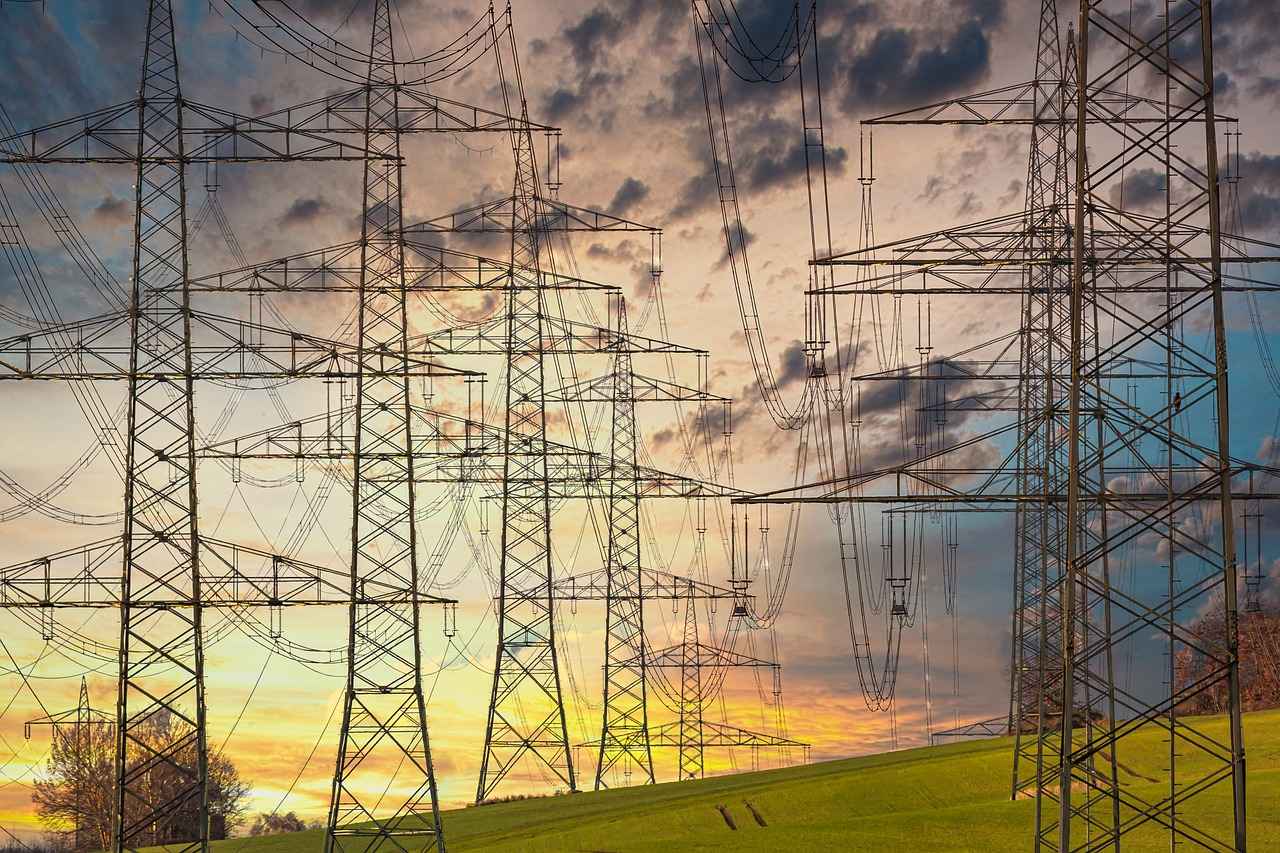
6. Weight Considerations for Electric Mountain Bikes
Weight considerations play a crucial role in the performance and handling of electric mountain bikes (e-MTBs). Understanding how weight affects your ride can significantly enhance your overall experience, especially in challenging terrains.
When it comes to electric mountain bikes, the weight can influence various factors such as maneuverability, stability, and rider fatigue. A bike that is too heavy can become cumbersome during steep climbs and technical descents, potentially leading to quicker exhaustion for the rider.
6.1. How Weight Affects Performance
- Lighter Bikes: Generally, lighter e-MTBs are easier to handle and maneuver, making them ideal for climbing steep hills and navigating tight trails.
- Heavier Bikes: While they may feel less agile, heavier models often provide more stability and durability, which can be beneficial on rugged terrains and during high-speed descents.
6.2. Finding the Right Balance
When selecting an electric mountain bike, it’s essential to find a model that strikes a balance between weight and performance features. An ideal e-MTB should not only be lightweight for easy handling but also equipped with robust components that enhance performance without compromising rider comfort.
Additionally, consider how the weight distribution of the bike affects your riding experience. A well-balanced bike can provide better control and stability, especially on technical trails.
In conclusion, understanding the weight dynamics of electric mountain bikes is vital for making an informed choice. Riders should evaluate their personal riding style, the types of trails they frequent, and how weight will impact their overall performance and enjoyment.
6.1. How Weight Affects Performance
The weight of an electric mountain bike plays a crucial role in determining its overall performance and handling characteristics. Generally, lighter bikes are easier to maneuver, making them ideal for riders who frequently navigate tight trails or technical sections. With a reduced weight, cyclists can experience improved agility, allowing for quick direction changes and enhanced responsiveness during rides.
However, it’s important to consider that heavier models often come with their own set of advantages. These bikes tend to provide greater stability and durability, particularly on rugged trails where the terrain can be unpredictable. The added weight can help absorb shocks and bumps, resulting in a smoother ride over rough surfaces. This stability is especially beneficial for downhill riding, where the bike’s heft can contribute to better control and confidence.
When selecting an electric mountain bike, finding the right balance between weight and performance features is essential. A bike that is too light may sacrifice durability, leading to potential damage on challenging trails. Conversely, a bike that is excessively heavy might lead to rider fatigue, especially during long climbs or extended rides.
In conclusion, understanding how weight affects performance is vital for any off-road enthusiast looking to optimize their riding experience. Riders should evaluate their personal preferences and the type of terrain they plan to tackle, ensuring they choose a bike that meets their specific needs while providing the right mix of maneuverability and stability.
6.2. Finding the Right Balance
Finding the Right Balance in an electric mountain bike is crucial for maximizing both performance and comfort. When selecting a bike, enthusiasts must consider how weight interacts with various features to create an optimal riding experience. A well-balanced bike not only enhances control but also ensures that riders can tackle challenging terrains without unnecessary fatigue.
The weight of an electric mountain bike significantly affects its handling and performance. Lighter bikes are easier to maneuver, especially during climbs and technical descents. However, they may lack the stability and durability needed for rugged trails. Conversely, heavier bikes often provide more stability but can lead to rider fatigue over long distances or steep inclines.
To achieve the perfect balance, consider the following factors:
- Motor Placement: Mid-drive motors typically lower the bike’s center of gravity, improving handling and balance. Hub motors, while easier to maintain, can add weight to the wheels, affecting maneuverability.
- Frame Material: The choice of frame material plays a significant role in weight. Aluminum frames are lighter but may not absorb shocks as well as heavier steel or carbon options.
- Battery Size: A larger battery increases weight, but it also extends your riding range. Finding a battery that provides sufficient power without adding excessive weight is essential.
- Suspension Type: Full suspension bikes offer better shock absorption but can be heavier. A hardtail bike is lighter and more efficient for climbing but may sacrifice comfort on rough descents.
Ultimately, the goal is to find a bike that meets your specific riding style and comfort preferences. Riders should test various models to determine which configuration feels best. Remember, a bike that feels comfortable and controlled will enhance your overall riding experience, allowing you to enjoy the trails to the fullest.
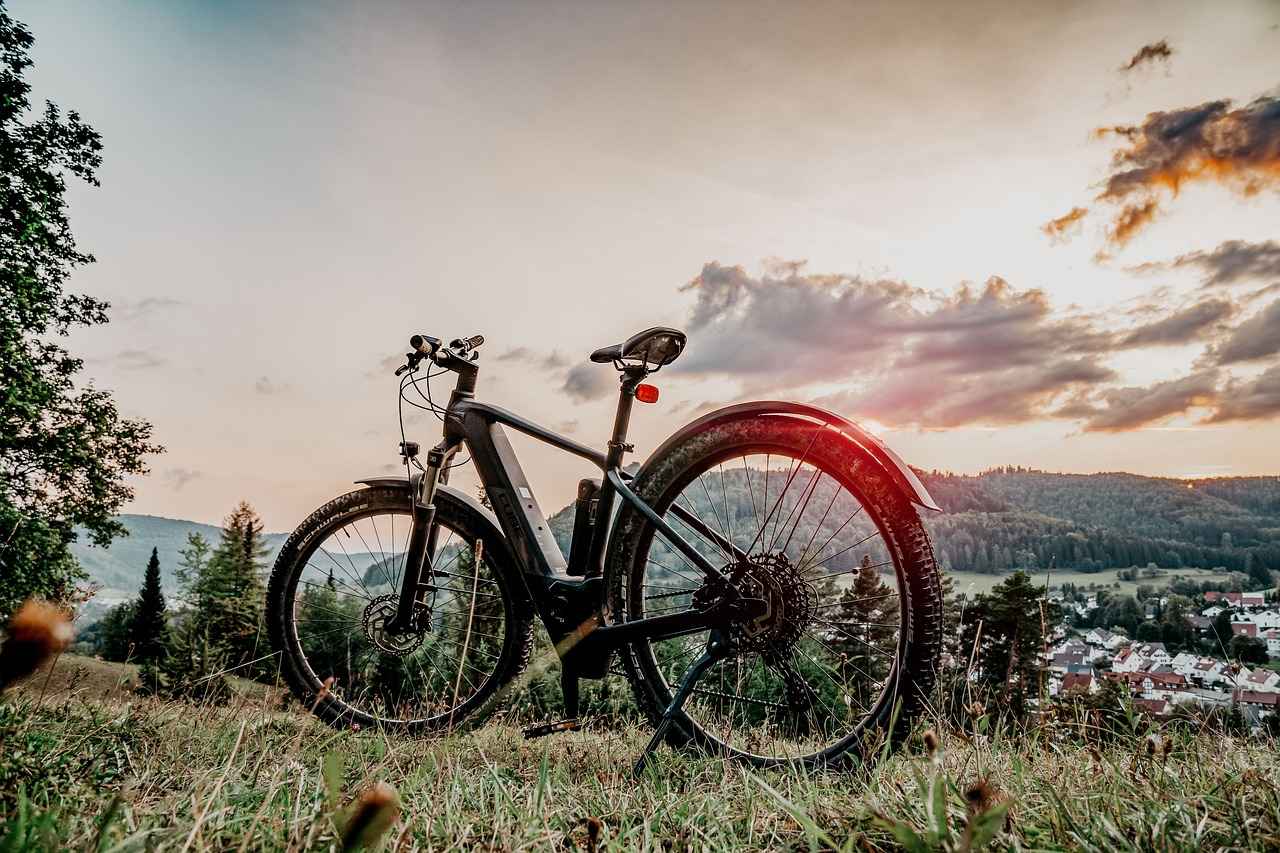
7. Price Ranges and Budgeting for Your E-MTB
Price Ranges and Budgeting for Your E-MTB
When it comes to purchasing an electric mountain bike (E-MTB), understanding the price ranges and what you can expect at different price points is essential for making an informed decision. Electric mountain bikes vary significantly in price, from entry-level models to premium options, and each category offers unique features and performance capabilities.
- Entry-Level Models: Typically priced between $1,500 and $3,000, these bikes are ideal for casual riders or those new to the sport. They usually come with basic features, sufficient battery life, and moderate motor power, making them suitable for light trails and recreational use.
- Mid-Range Models: Ranging from $3,000 to $5,500, mid-range E-MTBs offer a balance of performance and affordability. These bikes often include better components, enhanced suspension systems, and more powerful motors, making them suitable for more challenging terrains.
- Premium Models: Prices for premium electric mountain bikes start at around $5,500 and can exceed $10,000. These models are designed for serious enthusiasts and professional riders, featuring cutting-edge technology, superior build quality, and advanced features such as high-capacity batteries and customizable suspension settings.
Aside from the initial purchase price, it’s important to consider the total cost of ownership. This includes maintenance expenses, battery replacements, and the cost of accessories that may enhance your riding experience. Regular maintenance can help prolong the life of your bike and ensure optimal performance, which is crucial for off-road riding.
In conclusion, understanding the price ranges and budgeting for your electric mountain bike is vital for ensuring a satisfying purchase. By evaluating your riding style, needs, and budget, you can choose the right E-MTB that will provide you with enjoyment and performance for years to come.
7.1. Entry-Level vs. Premium Models
When venturing into the world of electric mountain bikes, understanding the distinction between entry-level and premium models is crucial for making an informed decision. Each category serves different types of riders, catering to varying needs and preferences.
Entry-level models are designed with casual riders in mind. They typically feature basic components and technology, making them more accessible in terms of price and usability. These bikes often come equipped with:
- Moderate motor power, usually between 250 to 500 watts.
- Basic battery capacity, providing a range suitable for short rides.
- Simple suspension systems that are adequate for light trails.
- A sturdy yet heavier frame, which may not offer the same agility as premium models.
These features make entry-level models ideal for those who are new to mountain biking or engage in casual rides on well-maintained trails. They provide a great way to explore the outdoors without a significant financial commitment.
On the other hand, premium models are tailored for serious off-road enthusiasts who demand superior performance and advanced technology. These bikes typically include:
- High-performance motors, often exceeding 750 watts, allowing for powerful climbs.
- Extended battery life, enabling longer rides without frequent recharges.
- Advanced suspension systems that enhance control and comfort on rugged terrains.
- Lightweight materials, improving maneuverability and overall riding experience.
Investing in a premium model can significantly enhance your riding experience, particularly on challenging trails. For dedicated riders seeking adventure and performance, these bikes offer the technology and durability necessary to tackle demanding off-road conditions.
In conclusion, the choice between entry-level and premium electric mountain bikes ultimately depends on your riding style, budget, and the terrains you intend to explore. Understanding these differences will help you select a bike that best suits your needs, ensuring a fulfilling riding experience.
7.2. Cost of Ownership Considerations
When considering the purchase of an electric mountain bike, it is crucial to look beyond the initial cost. The total cost of ownership encompasses several factors that can significantly impact your budget over time. Here are some key aspects to consider:
- Maintenance Costs: Regular maintenance is essential for keeping your electric mountain bike in optimal condition. This includes routine checks on the brakes, gears, and electrical components. Depending on the frequency of your rides and the conditions you encounter, maintenance costs can add up.
- Battery Replacement: The battery is one of the most critical components of an electric mountain bike. Over time, batteries can lose their capacity and may need to be replaced. Understanding the lifespan of the battery and its replacement cost is vital for long-term budgeting.
- Accessories: Investing in high-quality accessories such as helmets, lights, and protective gear can enhance your riding experience and safety. Additionally, items like bike locks, repair kits, and hydration packs should also be factored into your overall budget.
- Insurance: Depending on your location and the value of your bike, you may want to consider insurance. This can protect your investment against theft or accidents, adding another layer of cost to ownership.
Ultimately, while the initial purchase price of an electric mountain bike might seem appealing, it is essential to account for these ongoing costs. By doing so, you can ensure that your investment remains enjoyable and sustainable in the long run.
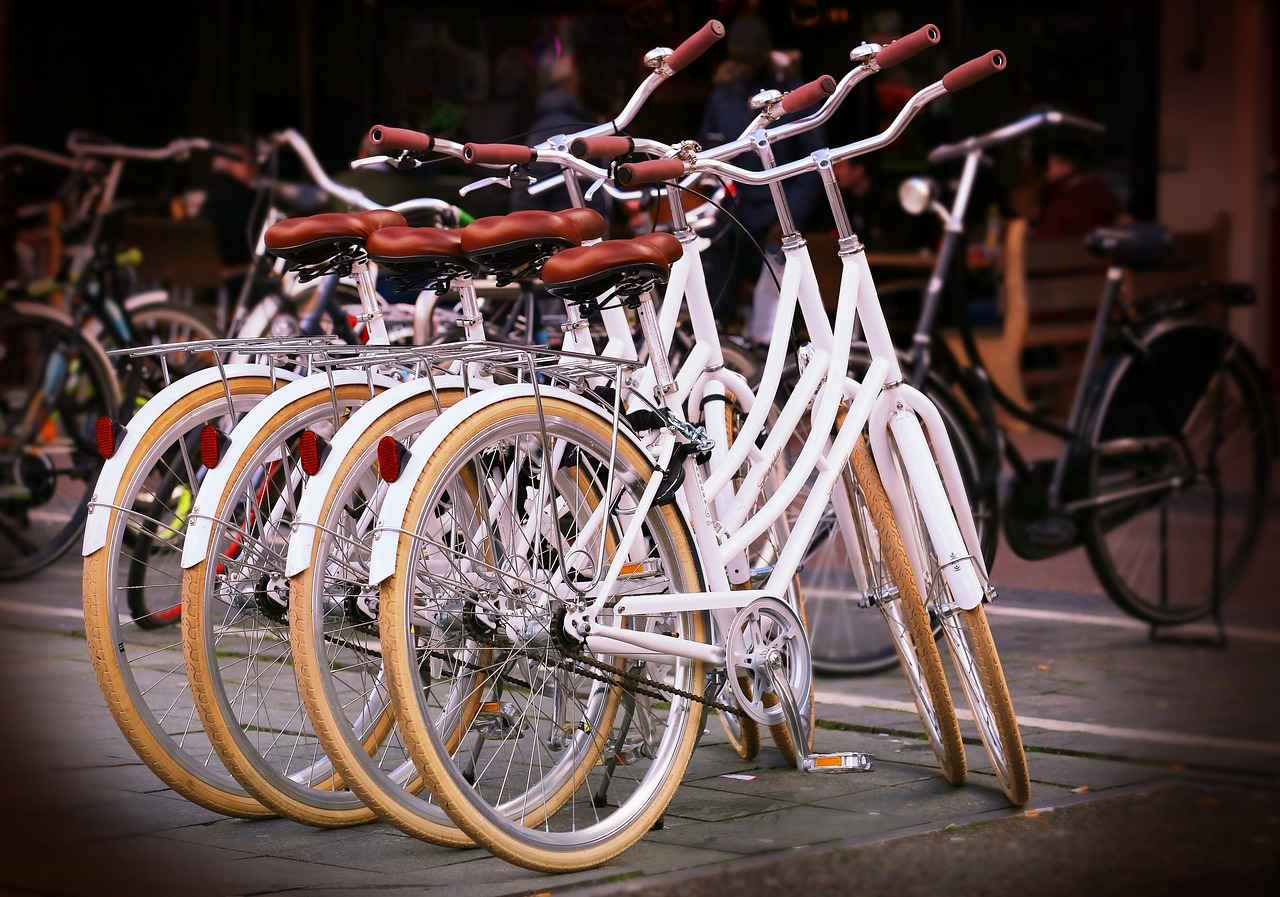
8. User Reviews and Experiences
User reviews are an essential resource for anyone considering an electric mountain bike (e-MTB). They provide a window into the real-world performance, reliability, and overall satisfaction of various models from different brands. By examining user feedback, potential buyers can gain insights that specifications alone cannot convey.
When exploring user reviews, it’s important to focus on several key aspects:
- Performance: Many riders share their experiences with how well a bike performs on different terrains. This includes acceleration, handling on steep climbs, and stability on descents.
- Reliability: Users often comment on the durability of the bike components, such as the motor and battery life. Reviews can highlight any recurring issues that may not be evident in product descriptions.
- Comfort: Feedback regarding the bike’s comfort level during long rides can be invaluable. Riders often discuss the effectiveness of the suspension system and overall ergonomics.
- Customer Service: Reviews frequently touch on the manufacturer’s customer support experience, which can be a deciding factor for many buyers.
To gather reliable user feedback, consider visiting reputable biking forums and websites. These platforms often feature a wide range of reviews that can give you a well-rounded perspective on different models. Additionally, look for detailed reviews that discuss both the pros and cons of each bike, as this will help you make a more informed decision.
It’s also beneficial to analyze common complaints found in user reviews. For instance, if multiple users mention issues with battery life or difficulties with the bike’s weight, it may indicate a potential pitfall. Understanding these common concerns can help you select a bike that aligns with your riding style and expectations.
In conclusion, reading user reviews is a crucial step in the decision-making process when purchasing an electric mountain bike. By leveraging the experiences of others, you can make a more informed choice, ensuring that the bike you select meets your needs and enhances your riding experience.
8.1. Gathering Reliable User Feedback
Gathering Reliable User Feedback is essential for making informed decisions about electric mountain bikes (E-MTBs). In the world of biking, user reviews serve as a valuable resource, offering insights into real-world performance and reliability. To effectively gather this feedback, consider the following approaches:
- Utilize Reputable Forums: Engage with established biking forums such as MTBR or Bike Forums. These platforms host discussions where enthusiasts share their experiences and opinions on various bike models.
- Check Specialized Review Websites: Websites like Bicycling and BikeRadar provide expert reviews and user testimonials. Look for comprehensive reviews that cover performance, durability, and comfort.
- Social Media Insights: Platforms like Instagram and Facebook often feature user-generated content. Search for hashtags related to specific bike models to see real-life photos and feedback from riders.
- YouTube Reviews: Video reviews can offer a dynamic perspective on E-MTBs. Channels dedicated to biking often provide in-depth analyses, allowing you to see the bikes in action and hear firsthand user feedback.
When reading reviews, focus on common themes and repeated feedback. This can help you identify both strengths and weaknesses of a model. For instance, if multiple users praise the bike’s battery life but mention issues with the suspension, it’s essential to weigh these factors according to your riding style.
Additionally, consider the context of the reviews. A bike that performs excellently in dry conditions may not fare as well in muddy terrains. Therefore, seek feedback from users who ride in similar environments to yours.
In conclusion, gathering reliable user feedback from various sources will empower you to make a well-informed choice when selecting your electric mountain bike, ensuring it meets your specific needs and preferences.
8.2. Analyzing Common Complaints
Analyzing Common Complaints
When it comes to selecting the perfect electric mountain bike, understanding user feedback is crucial. By identifying and analyzing common complaints among users, you can avoid potential pitfalls and select a bike that aligns with your riding style and expectations. Here are some key areas where users often express concerns:
- Battery Life: Many riders report dissatisfaction with battery longevity, especially during long rides. It’s essential to consider the capacity and efficiency of the battery to ensure it meets your riding needs.
- Motor Performance: Users frequently mention issues with motor responsiveness. Some riders prefer a more powerful motor for steep climbs, while others seek a balance between power and efficiency.
- Weight Distribution: Complaints about bike weight and balance can affect handling and comfort. Riders often look for bikes that offer optimal weight distribution for better maneuverability on rugged terrains.
- Suspension Quality: Many users express concerns about the suspension system’s ability to absorb shocks effectively. A well-designed suspension system is vital for a smooth ride on challenging trails.
- Price vs. Value: Some users feel that the price of certain models does not align with the features offered. Understanding the value proposition of each bike can help you make a more informed decision.
By paying attention to these common complaints, potential buyers can make better choices and select a bike that not only meets their expectations but also enhances their overall riding experience. Reading user reviews and engaging with biking communities can further provide insights into these issues, allowing for a more informed purchase.

9. Maintenance Tips for Electric Mountain Bikes
Proper maintenance is crucial for prolonging the life of your electric mountain bike and ensuring optimal performance during rides. Regular upkeep not only enhances your biking experience but also saves you money in the long run by preventing costly repairs. Below are some essential maintenance tips to keep your electric mountain bike in top condition.
- Regular Cleaning: After every ride, especially on muddy trails, it’s important to clean your bike thoroughly. Use a soft brush and mild soap to remove dirt and debris. Pay special attention to the drivetrain, as grime can affect performance.
- Inspect Components: Regularly check key components such as brakes, tires, and the battery. Look for wear and tear, and replace parts as necessary to maintain safety and performance.
- Battery Care: The battery is one of the most critical parts of an electric mountain bike. Always follow the manufacturer’s guidelines for charging and storage. Avoid letting the battery completely drain and store it in a cool, dry place when not in use.
- Tire Maintenance: Keeping tires properly inflated is essential for optimal performance. Check tire pressure before each ride and inspect for any punctures or damage.
- Chain Lubrication: A well-lubricated chain ensures smooth gear shifting and extends the life of the drivetrain. Use a suitable bike chain lubricant and wipe off any excess to prevent dirt accumulation.
- Brake Adjustment: Ensure your brakes are functioning correctly. Adjust the brake pads and cables as needed to maintain effective stopping power, which is vital for safety on downhill rides.
By following these maintenance tips, you can significantly enhance the performance and longevity of your electric mountain bike. Regular attention to detail will not only improve your riding experience but also keep your bike in excellent condition for many adventures to come.
9.1. Regular Cleaning and Inspection
Regular cleaning and inspection of your electric mountain bike are essential practices that can significantly enhance your riding experience and prolong the life of your bike. By maintaining your bike in top condition, you can prevent potential issues that may arise from neglect and ensure that every ride is enjoyable and safe.
One of the first steps in keeping your bike in excellent shape is to clean it regularly. Dirt and grime can accumulate on various components, affecting performance. Here are some key areas to focus on:
- Frame: Wipe down the frame with a damp cloth to remove mud and debris. Use a gentle soap if necessary.
- Chain: A clean chain ensures smooth shifting and efficient pedaling. Use a chain cleaner tool and lubricate it afterward.
- Brakes: Inspect brake pads and rotors for wear. Clean them with isopropyl alcohol to maintain optimal braking performance.
- Tires: Check for punctures and ensure they are inflated to the recommended pressure for better traction and control.
In addition to cleaning, regular inspections are crucial. Here are some tips:
- Check the battery: Ensure that the battery is charged and free from corrosion. A well-maintained battery is key to reliable performance.
- Inspect the suspension: Look for any signs of wear or damage and adjust settings as needed for your riding style.
- Test the brakes: Before each ride, squeeze the brakes to ensure they engage properly and provide adequate stopping power.
- Examine cables and wires: Ensure that all cables are intact and that there are no frays or loose connections.
By adopting these cleaning and inspection habits, you can avoid costly repairs and enjoy a smoother, more reliable riding experience. Regular maintenance not only enhances performance but also ensures your safety on the trails.
9.2. Battery Care and Maintenance
Battery Care and Maintenance is a crucial aspect of owning an electric mountain bike (E-MTB). Proper care not only maximizes the lifespan of your battery but also enhances the overall performance of your bike. Here, we explore essential tips and practices to ensure your battery remains in optimal condition.
- Regular Charging Practices: Always charge your battery after a ride, even if you haven’t depleted it fully. Keeping the battery charged between 20% and 80% is ideal for longevity.
- Avoid Extreme Temperatures: Batteries are sensitive to temperature. Store your battery in a cool, dry place and avoid exposing it to extreme heat or cold, as this can degrade performance.
- Use the Right Charger: Always use the charger that comes with your E-MTB. Using third-party chargers can lead to improper charging and potential damage.
- Periodic Maintenance Checks: Regularly inspect the battery for any signs of damage or wear. Look for swelling, corrosion, or unusual smells, which may indicate a problem.
- Deep Cycling: Occasionally, it’s beneficial to fully discharge and then recharge your battery. This process, known as deep cycling, can help recalibrate the battery’s management system.
In addition to these practices, it’s important to stay informed about your battery’s specific needs. Refer to the manufacturer’s guidelines for specific care instructions tailored to your battery model.
By following these care and maintenance tips, you can ensure that your electric mountain bike battery remains efficient and reliable, allowing you to enjoy countless adventures on the trails without worry.

10. Accessories to Enhance Your E-MTB Experience
Investing in the right accessories can significantly enhance your riding experience, improve safety, and provide convenience while navigating off-road trails. The right gear not only complements your electric mountain bike (E-MTB) but also ensures you are well-prepared for various terrains and conditions.
- Protective Gear: Safety should always be a priority when riding. Essential protective gear includes a high-quality helmet, knee and elbow pads, and gloves. These items can help prevent injuries during falls or collisions, giving you peace of mind as you tackle challenging trails.
- Bike Lights: If you plan to ride in low-light conditions, investing in bright front and rear bike lights is crucial. They enhance visibility for both you and other trail users, ensuring safer rides during dusk or dawn.
- Hydration Packs: Staying hydrated is vital during long rides. Hydration packs allow you to carry water comfortably without the bulk of traditional bottles, making them an excellent addition for off-road adventures.
- Bike Repair Kits: Being prepared for mechanical issues is essential. A compact repair kit that includes tire levers, a multi-tool, and a mini pump can save you from being stranded on the trails.
- GPS Devices: Navigating unfamiliar trails can be challenging. A reliable GPS device or a smartphone mount can help you stay on track and explore new routes confidently.
- Storage Solutions: Consider adding a bike bag or a rear rack for carrying extra gear. These storage solutions can help you transport everything from snacks to spare parts without compromising your bike’s performance.
- Upgraded Components: Customizing your E-MTB with upgraded components, such as better tires or a more comfortable saddle, can enhance your riding experience significantly. These upgrades can improve traction, comfort, and overall bike performance.
In conclusion, the right accessories can transform your E-MTB experience, making rides more enjoyable and safer. Whether you are a casual rider or a serious off-road enthusiast, investing in quality gear tailored to your needs is essential for maximizing your adventures.
10.1. Essential Safety Gear
Essential Safety Gear for Electric Mountain Biking
When venturing into the thrilling world of electric mountain biking, wearing appropriate safety gear is not just a recommendation; it is a necessity. As riders tackle challenging terrains, the risk of falls and accidents increases significantly. Therefore, equipping yourself with the right gear can make all the difference in ensuring a safe and enjoyable ride.
| Type of Gear | Description | Importance |
|---|---|---|
| Helmets | A well-fitted helmet protects your head from impact during falls. | Essential for preventing serious head injuries. |
| Pads | Elbow and knee pads provide cushioning against falls and scrapes. | Reduces the risk of cuts, bruises, and fractures. |
| Gloves | Gloves enhance grip and protect your hands from abrasions. | Improves control and comfort while riding. |
| Protective Eyewear | Goggles or glasses shield your eyes from debris and UV rays. | Crucial for maintaining visibility and eye safety. |
In addition to the basic gear outlined above, consider investing in high-visibility clothing. This can significantly increase your visibility to other trail users, especially in low-light conditions. Furthermore, wearing appropriate footwear with good grip can enhance your stability and control on uneven surfaces.
Ultimately, the right safety gear not only protects you during rides but also boosts your confidence, allowing you to fully enjoy the exhilarating experience of electric mountain biking. So, as you prepare for your next adventure, remember that safety should always come first!
10.2. Upgrades and Customization Options
Upgrading and customizing your electric mountain bike can significantly enhance your riding experience, making it more enjoyable and tailored to your specific needs. With a wide array of options available, you can personalize your bike to suit your riding style, terrain preferences, and comfort level.
Here are some popular upgrades and customization options to consider:
- Suspension Upgrades: Upgrading your suspension system can greatly improve your bike’s performance on rugged trails. Consider investing in high-quality shocks or forks that offer adjustable settings to adapt to different terrains.
- Wheel and Tire Customization: Choosing the right wheels and tires is crucial for traction and stability. Opt for wider tires with aggressive tread patterns for better grip on loose surfaces, or lighter wheels for improved acceleration.
- Battery Enhancements: If you frequently ride long distances, consider upgrading to a higher capacity battery. This will extend your range, allowing you to tackle more challenging trails without worrying about running out of power.
- Motor Upgrades: Depending on your riding style, you might want to upgrade your motor for better performance. A more powerful motor can provide enhanced torque, making climbs easier and improving overall speed.
- Handlebar and Seat Adjustments: Customizing your handlebars and seat can significantly impact comfort. Consider ergonomic grips and a seat that suits your riding position to reduce fatigue during long rides.
- Lighting and Safety Accessories: Adding lights and reflective gear can enhance your visibility during night rides. Safety should always be a priority, so consider investing in high-quality helmets and protective gear.
By exploring these upgrades and customization options, you can create an electric mountain bike that not only meets your performance expectations but also provides a comfortable and enjoyable riding experience tailored to your unique preferences.

11. The Future of Electric Mountain Bikes
The electric mountain bike industry is undergoing a remarkable transformation, driven by continuous advancements in technology and design. This evolution is not merely about enhancing performance; it’s about redefining the entire off-road biking experience for enthusiasts.
As battery technology improves, electric mountain bikes are becoming more efficient, offering longer rides with increased power. Riders can now tackle challenging terrains without the constant worry of battery depletion. Innovations such as fast-charging systems allow for quick recharges, enabling riders to spend more time on the trails and less time waiting for their bikes to power up.
Moreover, the integration of smart technology is reshaping how bikers interact with their bikes. Features like GPS tracking, ride analytics, and connectivity with mobile apps provide riders with valuable data to enhance their performance and safety. This shift towards a more connected biking experience is appealing to both seasoned riders and newcomers alike.
In terms of design, manufacturers are focusing on weight reduction and aerodynamics. Lighter frames and improved materials make electric mountain bikes easier to handle, especially on steep climbs and technical descents. Additionally, customizable components allow riders to personalize their bikes to suit their specific riding styles, whether they prefer aggressive downhill rides or leisurely trails.
Looking ahead, the future of electric mountain bikes appears bright. With the continuous influx of innovative features and designs, off-road enthusiasts can expect an exhilarating riding experience that combines the thrill of mountain biking with the benefits of electric assistance. As the industry evolves, staying informed about the latest trends and technologies will be essential for riders seeking to maximize their adventures on the trails.
In conclusion, the electric mountain bike sector is on the cusp of a significant revolution, promising enhancements that will cater to the diverse needs of riders. As technology continues to advance, the possibilities for off-road biking are limitless.
11.1. Emerging Technologies
Emerging Technologies in the electric mountain biking sector are transforming how enthusiasts experience the trails. With advancements in battery efficiency and smart connectivity features, the future of e-mountain biking looks promising and exciting.
As the demand for electric mountain bikes grows, manufacturers are investing heavily in research and development. One of the most significant innovations is the enhancement of battery technology. Modern batteries are now designed to be more lightweight and long-lasting, allowing riders to cover greater distances without the need for frequent recharges. This is especially important for off-road enthusiasts who often tackle challenging terrains where charging stations are scarce.
In addition to battery improvements, smart connectivity is becoming a standard feature in many high-end electric mountain bikes. These bikes are equipped with integrated technology that allows riders to connect their smartphones to their bikes via Bluetooth. This connectivity enables users to track their performance metrics, such as speed, distance, and battery life, directly on their devices. Furthermore, some models even offer navigation features, helping riders explore new trails with ease.
Another exciting trend is the integration of regenerative braking systems. This technology allows the bike to convert kinetic energy back into stored energy in the battery during braking, effectively extending the range and efficiency of the bike. This feature not only enhances the riding experience but also contributes to sustainability by reducing energy consumption.
Additionally, adaptive suspension systems are gaining traction. These systems automatically adjust the bike’s suspension settings based on the terrain, providing optimal comfort and control. Riders can now tackle rocky descents and steep climbs with confidence, knowing their bike is equipped to handle varying conditions.
In conclusion, the future of electric mountain biking is bright, driven by innovative technologies that enhance performance, connectivity, and sustainability. As these advancements continue to develop, riders can look forward to an even more exhilarating and efficient biking experience.
11.2. Trends Shaping the E-MTB Market
Trends Shaping the E-MTB Market
As the electric mountain bike (E-MTB) market continues to evolve, understanding the latest trends is essential for enthusiasts looking to make informed purchases. Current trends not only reflect the preferences of riders but also indicate where the industry is headed, allowing potential buyers to anticipate future developments.
- Increased Battery Efficiency: One significant trend is the advancement in battery technology, leading to longer ride times and faster charging capabilities. Modern E-MTBs are now equipped with batteries that provide greater capacity, enabling riders to tackle longer trails without the constant worry of running out of power.
- Integration of Smart Technology: Another trend is the integration of smart features in E-MTBs. Many bikes now come equipped with GPS tracking, fitness monitoring, and even mobile app connectivity, allowing riders to track their performance and customize their riding experience.
- Focus on Sustainability: The industry is also seeing a shift towards more sustainable practices. Manufacturers are increasingly using eco-friendly materials and production processes, appealing to environmentally conscious consumers.
- Customization Options: Customization has become a key trend, with many brands offering a range of components and accessories that allow riders to personalize their bikes according to their preferences and riding styles.
- Enhanced Suspension Systems: Innovations in suspension technology are also shaping the market. Riders can now choose from a variety of suspension setups that cater to different terrains, providing better shock absorption and control on rugged trails.
By staying informed about these trends, potential buyers can make better decisions regarding their next electric mountain bike purchase. Understanding how these developments impact performance, usability, and overall riding experience can lead to a more satisfying investment.
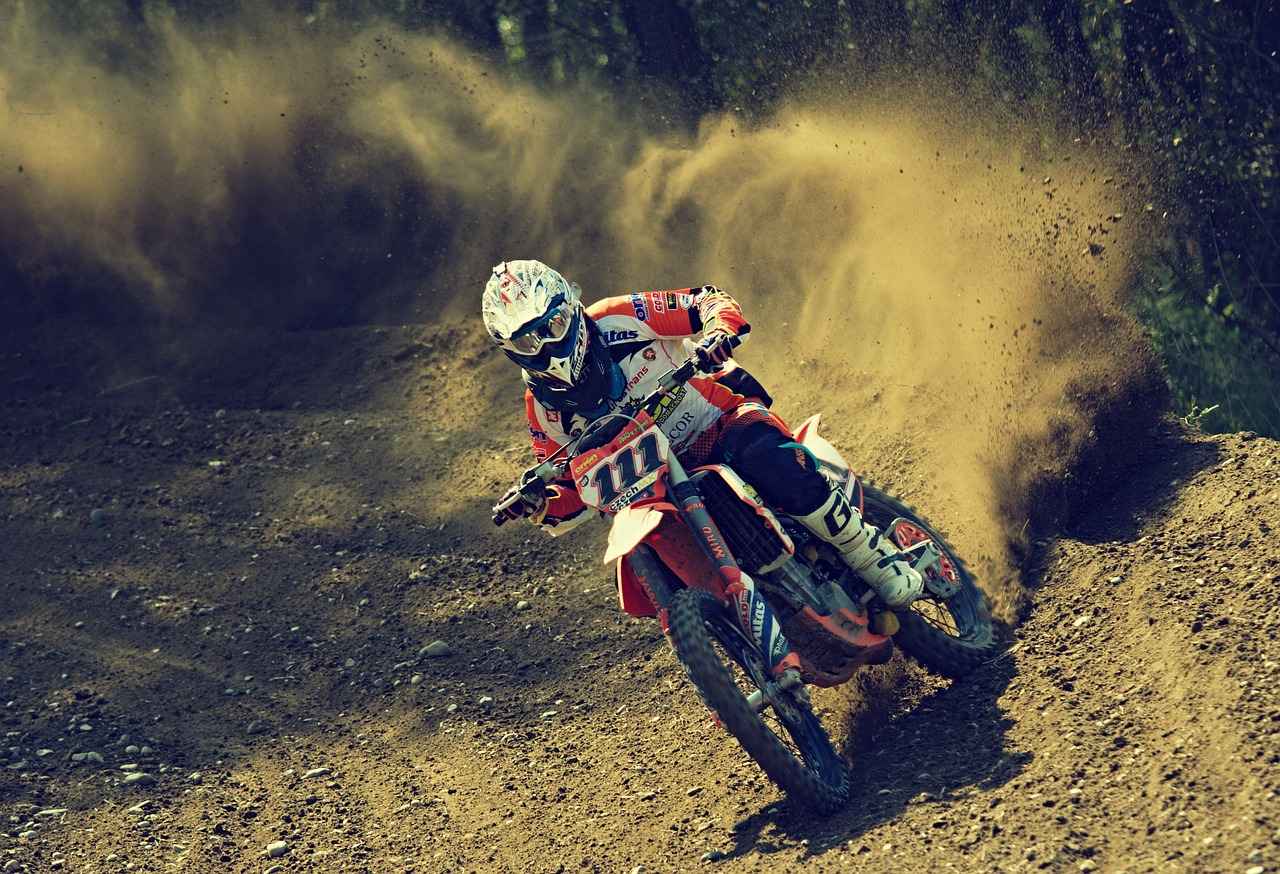
12. Conclusion: Choosing the Right Electric Mountain Bike for You
When it comes to selecting the right electric mountain bike, there are several essential factors to consider to ensure an enjoyable and satisfying riding experience. The process can be overwhelming due to the vast array of options available, but understanding your needs and preferences can simplify the decision-making process.
- Performance: Evaluate the motor power and type, as well as the bike’s weight and suspension system. These elements significantly influence how the bike handles different terrains.
- Budget: Determine how much you are willing to spend. Electric mountain bikes can range from budget-friendly options to high-end models with advanced features. Knowing your budget will help narrow down your choices.
- Personal Preferences: Consider your riding style and the types of trails you plan to tackle. Some riders may prefer a lightweight bike for climbing, while others might prioritize durability and stability for downhill rides.
Additionally, it’s crucial to test ride different models when possible. This hands-on experience can provide valuable insights into how each bike feels and performs, helping you make a more informed choice. Pay attention to factors such as comfort, control, and how intuitive the bike is to handle.
Furthermore, research user reviews and expert recommendations to gain a comprehensive understanding of various models. Look for feedback on aspects like battery life, maintenance requirements, and overall durability. This information can be instrumental in avoiding potential pitfalls and ensuring you select a bike that aligns with your expectations.
In conclusion, choosing the right electric mountain bike requires careful consideration of performance, budget, and personal preferences. By taking the time to evaluate these factors and seeking advice from reputable sources, you can find an electric mountain bike that not only meets your needs but also enhances your overall riding experience.
Frequently Asked Questions
- What should I look for when buying an electric mountain bike?
When shopping for an electric mountain bike, focus on key features like motor power, battery life, and suspension systems. These factors can greatly influence your riding experience, especially on off-road trails.
- How does motor type affect my riding experience?
The type of motor—hub or mid-drive—plays a crucial role in performance. Hub motors are easier to maintain and provide a smooth ride, whereas mid-drive motors offer better torque and handling on rugged terrains.
- What is the ideal battery capacity for long rides?
For extended rides, look for a battery capacity of at least 500 watt-hours (Wh). This will ensure you have enough power for longer trails without frequent recharging.
- Should I choose a hardtail or full suspension bike?
If you prioritize climbing efficiency and weight, a hardtail might be your best bet. However, if you want better shock absorption and control on descents, consider a full suspension bike.
- How can I maintain my electric mountain bike?
Regular cleaning and inspection are essential. Pay special attention to the battery and drivetrain to ensure optimal performance and longevity. Proper care can make a big difference!
